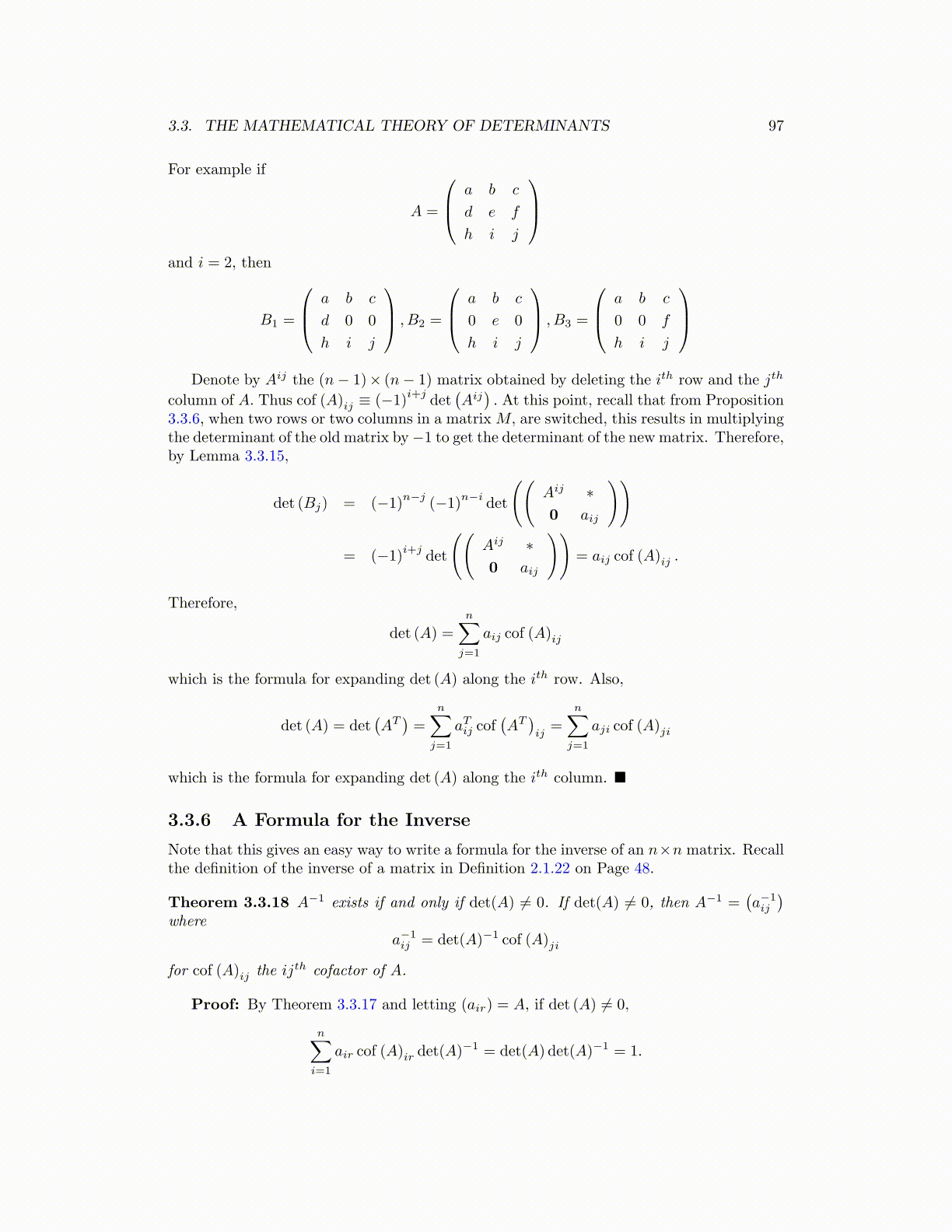
3.3. THE MATHEMATICAL THEORY OF DETERMINANTS 97
For example if
A =
a b c
d e f
h i j
and i = 2, then
B1 =
a b c
d 0 0
h i j
, B2 =
a b c
0 e 0
h i j
, B3 =
a b c
0 0 f
h i j
Denote by Aij the (n− 1)× (n− 1) matrix obtained by deleting the ith row and the jth
column of A. Thus cof (A)ij ≡ (−1)i+j
det(Aij). At this point, recall that from Proposition
3.3.6, when two rows or two columns in a matrixM, are switched, this results in multiplyingthe determinant of the old matrix by−1 to get the determinant of the new matrix. Therefore,by Lemma 3.3.15,
det (Bj) = (−1)n−j
(−1)n−i
det
((Aij ∗0 aij
))
= (−1)i+j
det
((Aij ∗0 aij
))= aij cof (A)ij .
Therefore,
det (A) =
n∑j=1
aij cof (A)ij
which is the formula for expanding det (A) along the ith row. Also,
det (A) = det(AT)=
n∑j=1
aTij cof(AT)ij=
n∑j=1
aji cof (A)ji
which is the formula for expanding det (A) along the ith column. ■
3.3.6 A Formula for the Inverse
Note that this gives an easy way to write a formula for the inverse of an n×n matrix. Recallthe definition of the inverse of a matrix in Definition 2.1.22 on Page 48.
Theorem 3.3.18 A−1 exists if and only if det(A) ̸= 0. If det(A) ̸= 0, then A−1 =(a−1ij
)where
a−1ij = det(A)−1 cof (A)ji
for cof (A)ij the ijth cofactor of A.
Proof: By Theorem 3.3.17 and letting (air) = A, if det (A) ̸= 0,
n∑i=1
air cof (A)ir det(A)−1 = det(A) det(A)−1 = 1.